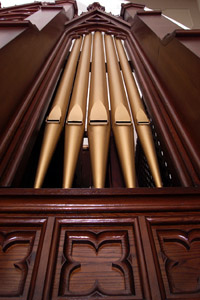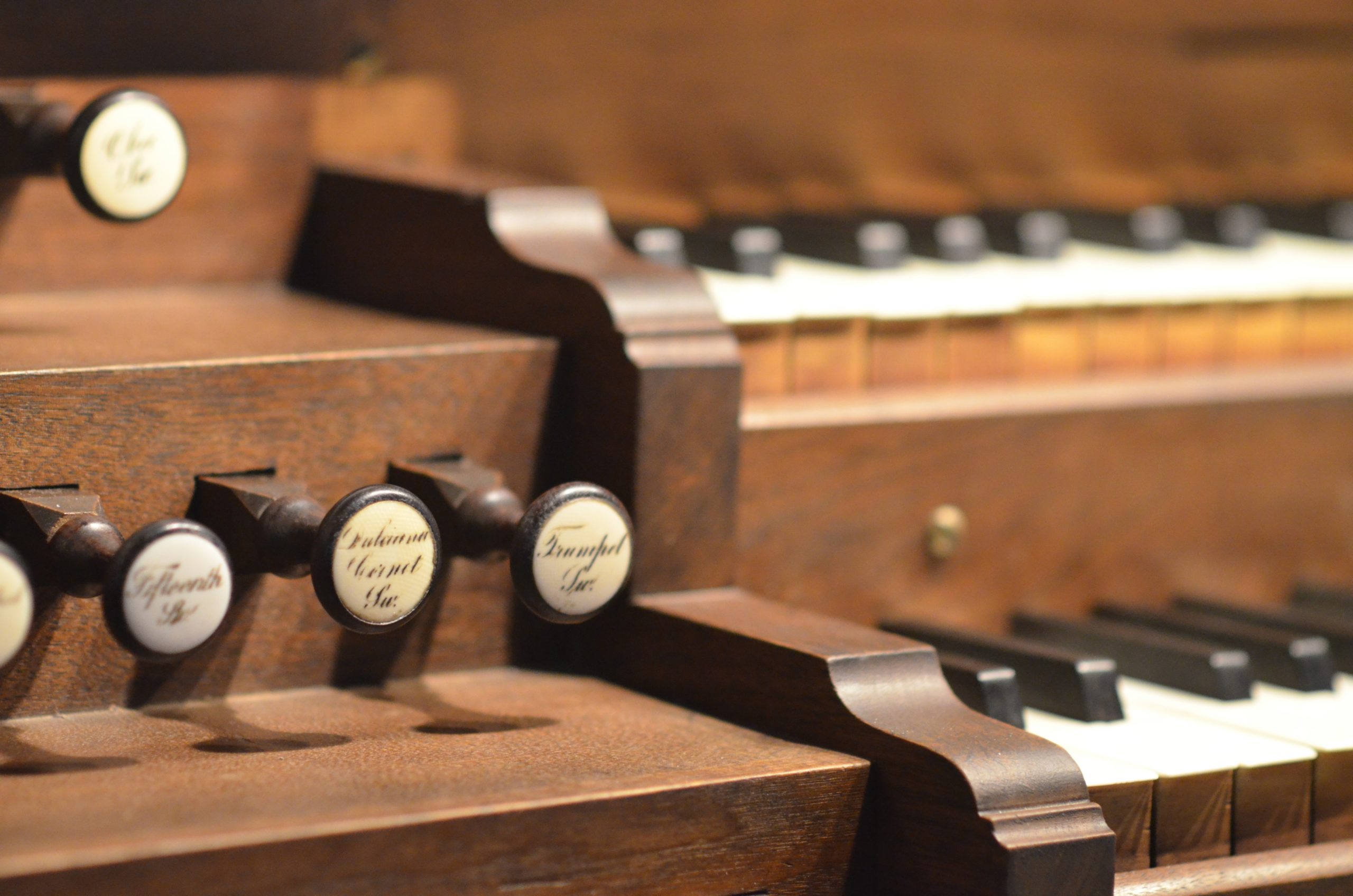This great instrument at St. John’s, the Hook Opus 288, is one of only a dozen or so three-manual E. & G. G. Hook organs in existence today. It is the largest 19th Century “tracker action” organ in northern New England. The organ was first heard by the parishioners on Christmas Eve, 1860.
The History of St. John’s Pipe Organ
In 1824, Elias Hook (1805-1881) and George G. Hook (1807-1880), sons of a Salem, Massachusetts cabinet maker, apprenticed to the famous Boston organ builder William M. Goodrich. They returned to their hometown in 1827 and set up shop there, and in 1831 the young and rapidly growing firm of E. & G. G. Hook moved to Boston.

Over the next 40 years, the factory produced more than 600 instruments, large and small, establishing for the firm a reputation as one of the best in the country. In 1872, Francis Hastings entered into a partnership with the Hook brothers; and after 1881 the company was known as Hook and Hastings.
The company ceased operations in 1936, having built more than 2,500 instruments. Those that still survive in New England and elsewhere are speaking monuments, attesting to the superb craftsmanship of their makers.
This great instrument at St. John’s, Hook Opus 288, was planned for by Fr. John Bapst and installed during the pastorate of his successor, Fr. Henry Gillen. The organ cost $4,000 and was delivered from the Boston factory by steamship, arriving in Winterport on the Penobscot River, south of Bangor. Taking nearly two weeks to assemble, the organ was first heard by the parishioners on Christmas Eve, 1860.
St. John’s organ is the largest 19th Century “tracker action” organ in northern New England. The term “tracker action” describes a direct mechanical connection – not an electrical one, as became common later on – between the keys and the pallets under the pipes.
The organ has 34 stops and 1,869 pipes varying in sounding length from a few inches to 16 feet. It is a three-manual organ, having three keyboards for the hands, plus the pedalboard, played by the feet.

The Swell (top) manual controls the pipes that are housed in a box having shutters across the front, which open and close to gradually vary the dynamic level of the sound. The Great (middle) manual controls the pipes of the largest scale and the loudest tone. The Choir (lower) manual plays pipes that have a lighter and softer sound used also to accompany singing voices. The Pedal keyboard controls the pipes that provide a bass to the entire organ.
For many years the organ’s wind power was produced with hand-pumped bellows requiring one or two pumpers whenever the organ was played. Sometime in the early part of the 20th Century, the pumping bellows were disconnected and the organ was equipped with a new electric blower. The hand-pumping option has recently been restored.
The organ deteriorated over time, and much of it was unplayable by the end of the 1970s. A major restoration was undertaken by Bozeman-Gibson & Company of Deerfield, New Hampshire, and the Hook Opus 288 came to life again in 1981.
The St. John’s Organ Society, supported by the generous contributions of the public, is dedicated to the instrument’s preservation and its appreciation by future generations of loyal listeners.


